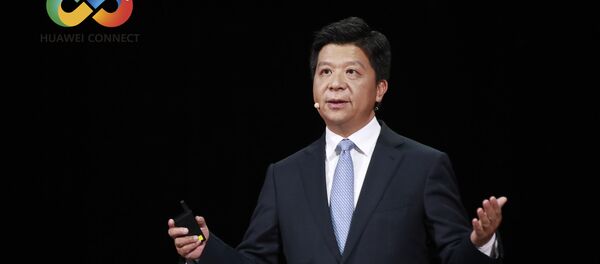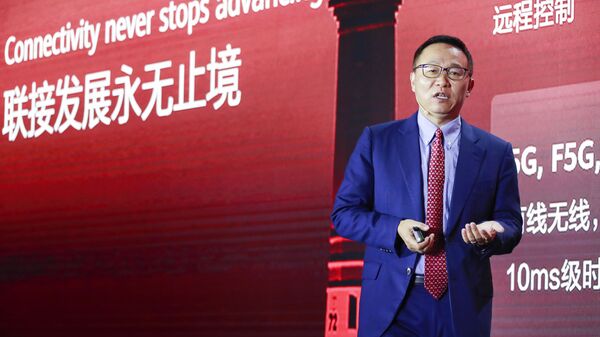Huawei Technologies and the United Nations Broadband Commission held the sixth annual Ultra-Broadband Forum (UBBF) 2020 in Beijing.
David Wang, Huawei executive director and chairman of the Investment Review Board, discussed ongoing challenges in the IT industry in his keynote speech as well as the company's All-Scenario Intelligent Connectivity Solutions white paper.
— Huawei (@Huawei) October 14, 2020
According to the document, numerous scenarios will accelerate the digital transformation of global industries and allow home broadband to drive the 'experience economy era', via five changes in the IT sector.
According to authors B Joseph Pine II and James Gilmore, the experience economy moves beyond entertainment or providing services to build "personal, memorable" experiences while engaging customers.
Speakers at the event included guests from China Mobile, FTTH Council Europe, TechUK, IPv6 Forum, Ernst & Young Advisory Limited, SAMENA Telecommunications Council and Omdia.
Five Changes in the IT Sector
Previous iterations of networking aimed to connect internet users and homes under the Internet of Everything, Wang said.
US tech firm Cisco defines the Internet of Everything as the merging of "people, process, data, and things", leading to more valuable experiences and opportunities for "businesses, individuals, and countries".

The Huawei exec defined five changes in the IT sector over numerous industries and how emerging technologies could facilitate growth in the market.
The ongoing COVID-19 pandemic has skyrocketed home broadband and enterprise-level demand, namely at the office and production level, and shifted focus to "production, transactions, and operations", he explained.
Industries have different connectivity requirements and must utilise deterministic networks, allowing vertical markets, or goods and services provided in a specific industry, to flourish.
— Huawei Cloud Core (@HuaweiCloudCore) October 10, 2020
The Institute of Electrical and Electronics Engineers (IEEE) states deterministic networking allows low latency, software and hardware managed devices in manufacturing, machine-to-machine learning, connected cars and audio or video streams.
Industry leaders will also deliver "ubiquitous" gigabit (1000mb/s) connections across all platforms such as mobile, WiFi and optic fibre networks.
Industries can move from manual operations and maintenance (O&M) to 'hyper-automation', Wang said, adding that 5G networks will make O&M more complex than on 4G ones due to big data and AI simplifying decision processes.
Hyperautomation allows the automation of repetitive tasks with AI, including robotic process automation (RPA).
— Nividous (@Nividous) October 12, 2020
He also called for upgrades in networks to meet the five challenges, adding that focus should remain on requirements such as ubiquitous gigabit internet, deterministic experience, hyper-automation, leading to intelligent connectivity.
Further solutions were launched at the event, including intelligent networks solutions for homes and campus networks, low-latency private lines and "wavelength" connections for enterprises up to 100 Gbps.
Services such as cloud computing across multiple networks would also boost network efficiency, he added.
Boosting Connectivity in the COVID-19 Pandemic, US Tech War
The speech comes after a previous address from company rotating chairman Guo Ping in September, where he called on the industry to collaborate on emerging IT technologies via five tech domains - AI, cloud services, networking, computing and industry applications - to boost business and reach strategic targets.
Mr Wang concluded at the UBBF event that Huawei would "redouble" efforts in research and investment in next-generation networking.
"Through continuous investment in 5G, Optical Network and IPv6 Enhanced innovation, today we launch our all-scenario intelligent connectivity solutions. These solutions will make ultra-broadband networks greener and more efficient, and create a more intelligent world", Mr Wang added.
The world's leading provider of IT equipment was placed on a US blacklist along with over 70 Chinese firms amid the ongoing trade and tech war, with Washington accusing the Shenzhen-based firm and several others of spying on behalf of the Chinese government as well as blocking their access to key technologies such as semiconductors and components.
Huawei, TikTok owner ByteDance and multiple officials in Beijing have condemned the measures, stating the Trump administration has failed to provide evidence and harmed connectivity efforts amid the ongoing COVID-19 pandemic.



